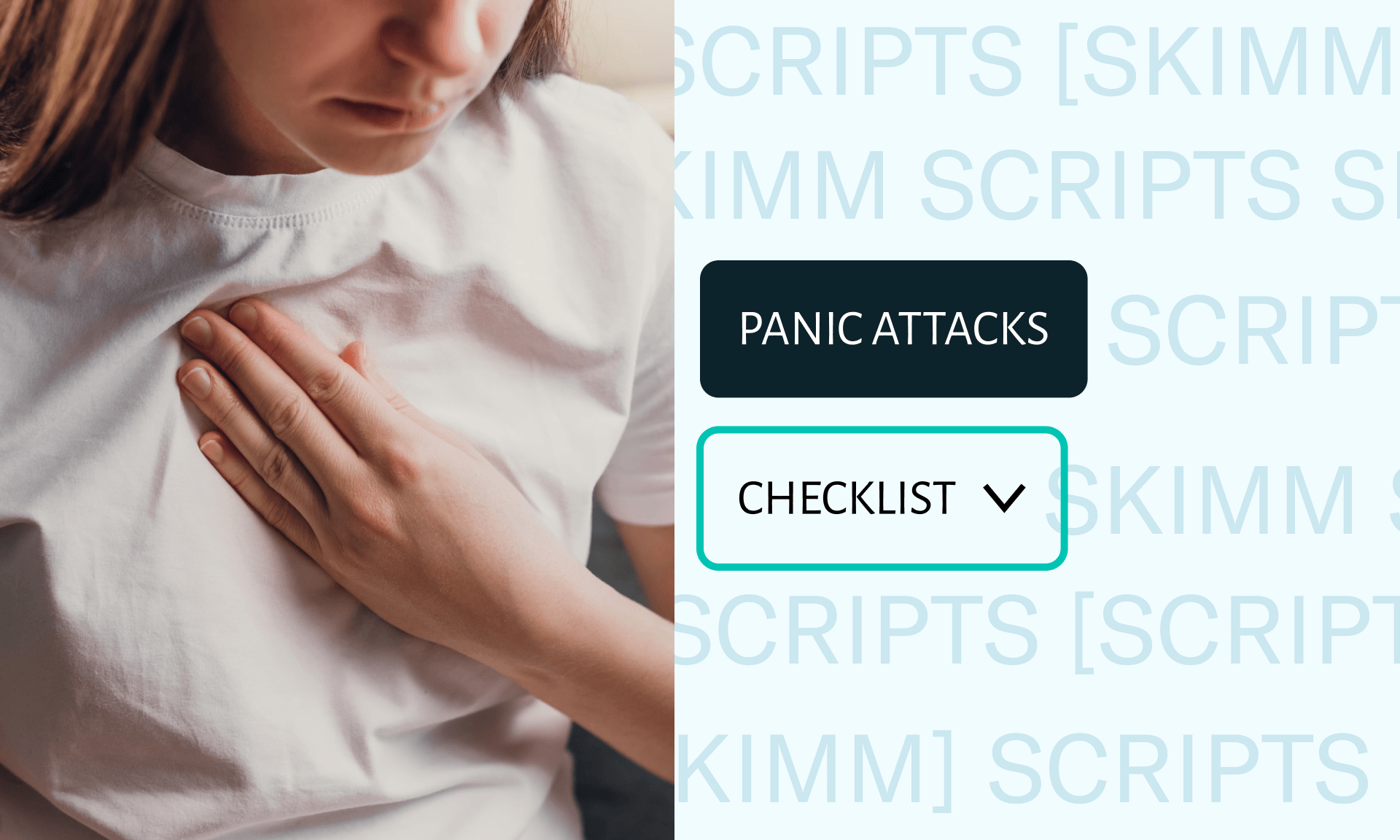Putting something on your to-do list isn't enough to get it done. Because you don’t always know where to start or the steps you need to take. Skimm Scripts gives you the words, spreadsheets, or templates you need to get things off your to-do list...and get on with your life.
When a panic attack comes on, all you want is for it to stop. While treatments like therapy and medication offer long-term help, a mental tool kit of strategies can help you navigate in real time.
With the help of Claire Plumbly, a licensed clinical psychologist and author of The Trauma of Burnout, we put together a checklist of strategies to help calm a panic attack before it’s full-blown. Screenshot, download, or print it out so it’s nearby when you need it.
How can I tell if I’m having a panic attack?
You’ll likely experience intense waves of fear (even ones that come seemingly out of nowhere) and catastrophic thoughts like “I'm going to die,” says Plumbly. Panic attacks also have physical symptoms such as:
Rapid heartbeat. Your heart often beats more than the normal 60 to 100 beats per minute during a panic attack. The sudden increase can lead to lightheadedness and/or shortness of breath.
Dizziness. You may feel increasingly dizzy or like you’re going to pass out.
Trembling. This is believed to be an extension of the body’s “fight-or-flight” response.
What can I do if I’m having a panic attack?
There are a few things you can do to distract your body from the panic attack or self-soothe as it’s happening. Keep in mind that the more you practice them when you’re not panicking, the easier they will be to implement when you are, says Plumbly.
Try to leave the situation you’re in
Find a place to reset (like a bathroom or the break room at work where you can be alone or with someone you trust).
Label the panic attack as what it is — an “adrenaline surge” — to take some of the fear out of it.
Use breathing exercises, like…
Box breathing: In for four seconds, hold for four, out for four, hold for four, repeat.
The 4-7-8 breathing technique: Inhale through your nose for four seconds, hold for seven, exhale through your mouth for eight.
Trace your hand: With one finger follow the outline of the opposite hand, inhaling as you trace up each finger and exhaling as you trace down.
Repeat a mantra to yourself, like…
“I didn’t cause the feelings I’m having and I don’t have to feel guilty for having them.”
“I am safe.”
“These feelings are temporary.”
“This will pass.”
“Everything is going to be OK.”
“I have gotten through this before, and I will get through this again.”
Take in your physical surroundings to help distract you and bring you back to the present. Try to:
Mentally acknowledge the things or people around you (like trees, cars, or faces).
Dab cold water on your face or hands if you feel hot
Eat some sour candy or biting into a lemon.
If you’re near someone you trust, tell them what you’re going through.
If you experience panic attacks to the point where they interfere with your life, speak to a mental health professional or your PCP.
theSkimm
Panic attacks can be debilitating. These real-time hacks can help find a calm and grounded place as they happen.
This content is for informational and educational purposes only. It does not constitute a medical opinion, medical advice, or diagnosis or treatment of any particular condition.
Live Smarter
Sign up for the Daily Skimm email newsletter. Delivered to your inbox every morning and prepares you for your day in minutes.
